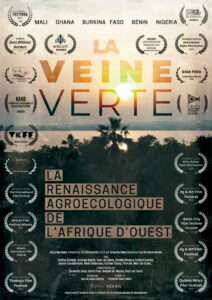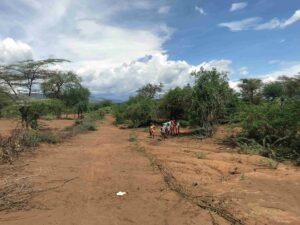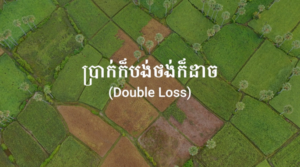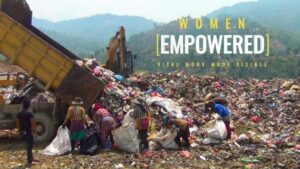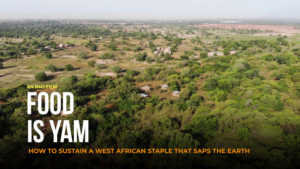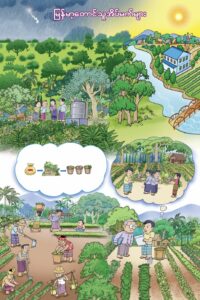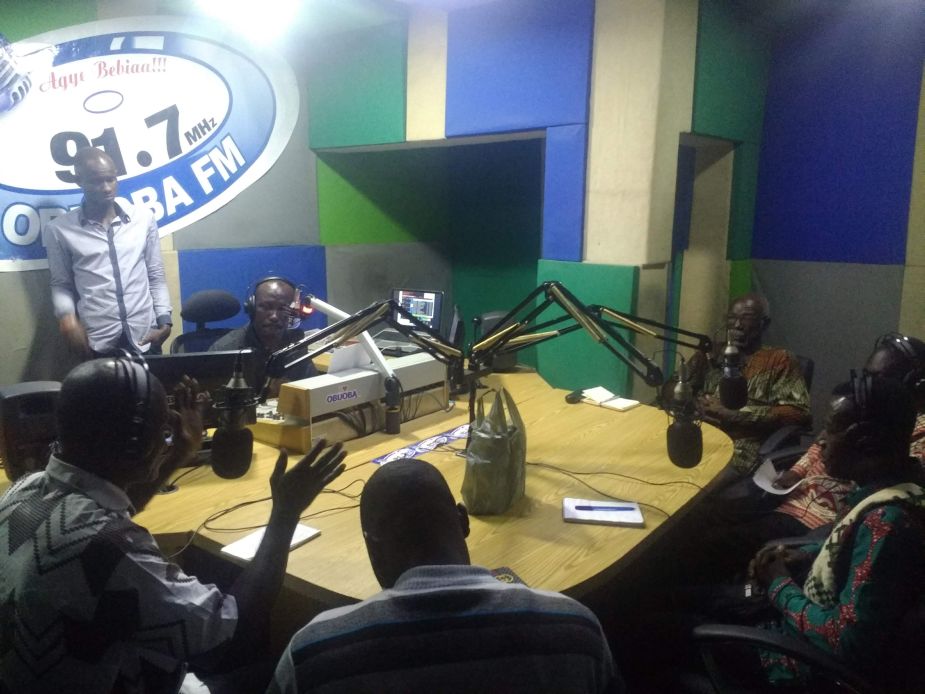
Turn the radio on: Strategies for more fertile African soils
ORM4Soil stands for “Organic Resource Management for Soil Fertility” and soil fertility is therefore a key focus. The problem of low and declining soil fertility is acute in large parts of Africa. It entails ever lower food yields and ever greater risks of soil degradation and erosion. The main reason is that many farmers extract too many nutrients from their soils without providing sufficient measures for humus to build up. Mineral fertilisers only help in the short term. They mainly nourish the plants, but not the soil.
There are known and proven methods that can stop or even reverse the decline in soil fertility. Techniques that are also worthwhile for farmers financially or in terms of labour input. For Christoph Spurk, head of the ORM4Soil communication cluster, says: “We knew that every new technique has to be profitable in one way or another. Otherwise it will not be adopted by the smallholder population.”
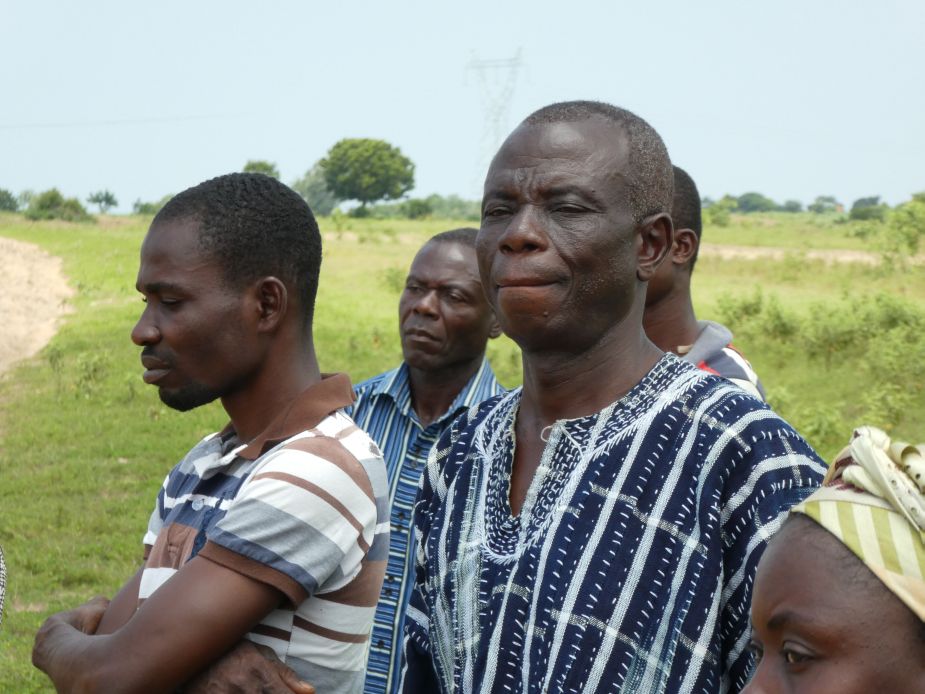
Picture 1: Farmers from Sege in Ghana listen carefully during visits to ORM4Soil field trials
Feeding the soil
The methods are not new, but their use is still too limited, especially in Africa. Adding compost is one, covering the soil with crop residues, so-called mulching, is another. The latter cools the soil in hot weather and prevents erosion. Another well-tried option is nitrogen fertilisation using legumes such as beans or peas. In mixed crops with cereal plants such as maize or millet, legumes, in symbiosis with bacteria, draw nitrogen from the air into the soil, where the roots of the cereal plant absorb it as fertiliser. A similar effect is achieved in agro-forestry by using certain trees and shrubs, which are often planted in rows between the main crops. Incorporated into the soil, their leaves serve as a source of nitrogen.
Why do not more African smallholder farmers use these methods for improving soil fertility? What factors determine whether they engage in something new, dare to do something? ORM4Soil sought answers to these questions in Mali and Ghana in West Africa and in Zambia and Kenya in the southeast of the continent. Each country had two study areas, and 300 randomly selected smallholders were interviewed in each of them. A total of 2,400 people.
Enormous data pool
The survey was conducted a first time in 2016 and repeated in 2019. In between, interventions took place through radio broadcasts, field days and extension service activities. The panel design is a particular feature of the ORM4Soil study. It makes individual changes (or constancy) recognisable. For example, the researchers were amazed to find that there were also dropouts for many of the techniques. Farmers who had used a technique in 2016 but no longer in 2019. “Before that, we were sure that the farmers would continue with the techniques if they had only started using them once,” says Christoph Spurk.
Among a variety of factors analysed by ORM4Soil researchers simultaneously in statistical models, the individual’s willingness to innovate showed the strongest influence on whether they adopted a new technique. “The data show that smallholders who have tried new crops or a new technique before are much more inclined to try a new technique that improves soil fertility,” said Christoph Spurk, who teaches at the Zurich University of Applied Sciences in Winterthur. Research has overlooked this factor until now. On the other hand, factors that were usually seen as important are apparently irrelevant: A person’s level of education, age or gender showed no effect in the ORM4Soil study.
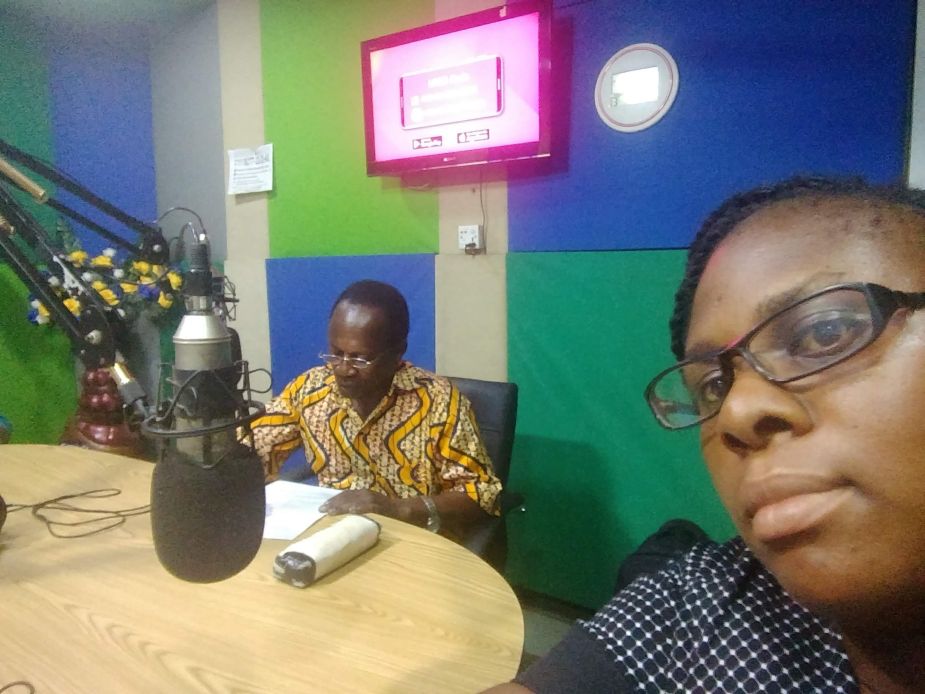
Picture 2: Selfie by PhD student Becky Baah-Ofori with Professor Godfred Ofosu-Budu at Obuoba Radio studio, Ghana
The earworm method
In Africa, there are many radio programmes specifically for agricultural stakeholders. The African ORM4Soil partners (researchers and extension workers) visited broadcasting stations and programmes. They talked about the problem of declining soil fertility and gave very specific tips on what to do about it, adapted to the geographical and cultural context of each region. Several half-hour to full-hour radio features were broadcast and repeated in each region.
“From our point of view, the most successful radio programme with the greatest impact was a broadcast in Zambia,” recalls media scientist Christoph Spurk. It was a good quality, local station with a competent, knowledgeable radio presenter. The communication expert is convinced that the excellent quality of a radio emission and the agricultural knowledge of its presenters are central to this. “Unfortunately, the quality of many African agricultural emissions is insufficient,” he says, “many presenters lack the knowledge to ask insightful questions.” After the broadcast in Zambia, Spurks Team noticed a spread of organic fertilisation in the area with very high proportions of livestock manure. This was exactly what the researchers on the radio had recommended.
Paralysing contradictions
Mixed crops with legumes, on the other hand, had hardly increased in the same area, although they were also mentioned in the broadcast. The analysis showed that other, contradictory messages hampered the spread of this technique. For example, the widespread doctrine of “conservation agriculture” in the area, which is also promoted by the FAO, propagates the use of herbicides. But herbicides and legumes in mixed cropping are mutually exclusive.
“This is one of the most important findings so far,” says Spurk. “Farmers are exposed to many, sometimes oppositing messages from different actors. Among them are those that negate the problem of soil fertility.” Many extension services also propagate the use of mineral fertilisers only, even though this can no longer remedy the problem of declining soil fertility, especially on heavily depleted soils. “It is naïve to think farmers do only receive the correct information”, Christoph Spurk says.
“Farmers are exposed to many, sometimes oppositing messages from different actors.”
Christoph Spurk, Zurich University of Applied Sciences
The national coordinator of ORM4Soil in Ghana, Godfred Ofosu-Budu, was himself a guest on Ghana’s Obuaba radio station. Looking back, he says: “Radio is good if the farmers already know the technology presented and if there are no contradictory messages.” Nevertheless, he prefers agricultural advisors who visit the farmers on site: “The radio cannot replace the physical demonstration of a technology or real interactions between farmers and agricultural advisors”, the professor of agricultural sciences at the University of Ghana is convinced.
“The radio cannot replace the physical demonstration of a technology and real interactions between farmers and agricultural advisors.”
Godfred Ofosu-Budu,University of Ghana
“Radio alone does not result in changes of behaviour,” Christoph Spurk relativises. Ultimately, it takes a combination of different channels and as many repetitions of a message as possible. The more channels, the better. The research team differentiates 15 different ones, from radio, television or internet to neighbourhood talks and agricultural fairs. “Even better would be a public debate. Just a message here and there is not enough to change behaviour. Only when many people engage in a discourse do they become sensitised to a topic and realise that something has to be done.”
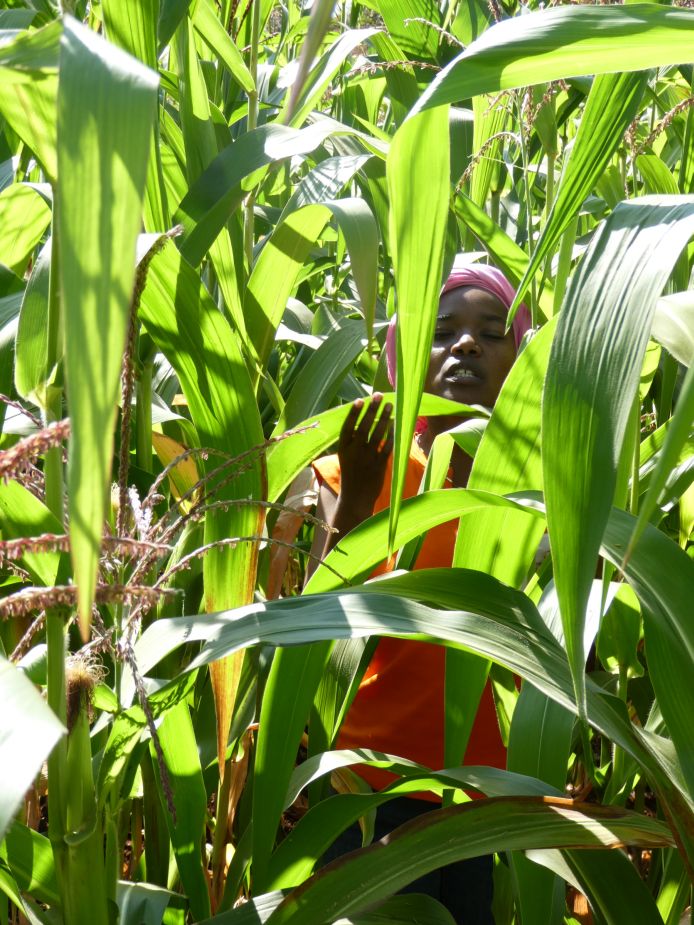
Picture 3: A farmer inspects ORM4Soil field trials in Tharaka-Nithi in Kenya
Motivating success
Experiencing one’s own effectiveness is also important. “The data in some regions show that farmers adopt easier the innovations, when soil fertility is already moving in a positive direction,” the researcher says. “It is a good motivation, but a negative trend on the other hand seems to lead to resignation and inaction.”
The research shows that – except in Mali, which is mostly in the Sahel – not all farmers are aware of the problem of declining soil fertility. “Perhaps a certain threshold of degradation has to be crossed first,” Spurk speculates. He wishes: “It would be important to build up basic knowledge about soils amongst farmers.” More resistant to contradictory and sometimes wrong messages and more likely to engage in soil fertility management were those farmers in the ORM4Soil study who had correct knowledge about soils.
Factors that promote the implementation of research knowledge in practice
1. The individual’s willingness to innovate: the higher, the better. Education is irrelevant.
2. Repetition of the message through different channels, optimally a broad public discourse
3. Clear messages, no contradictory recommendations from other actors
4. Change gives short-term benefits (money and/or effort) to those affected
5. Experiences of success – the perception of improvement and effectiveness – increase motivation to continue. Perceptions of deterioration, on the other hand, tend to lead to resignation.
Omnipresent radio
Radio is the African mass medium par excellence. This also applies to smallholder farmers in rural regions, as the first ORM4Soil survey showed. 90 percent of the rural population can be reached via radio, compared to a maximum of a quarter via television and far less than 5 percent via the internet (in rural areas!). Many farmers carry a radio with them when they work the fields. And since every mobile phone is also a radio receiver, the reach of the medium has increased even more.
Related Posts
The Green Vein: Agroecology Rising in West Africa
WOMEN EMPOWERED: Vital Work Made Visible
Sources
Contact:
Christoph Spurk, Zurich University of Applied Sciences, Switzerland, skcp@zhaw.ch.
Project:
ORM4Soil: Farmer-driven Organic Resource Management to Build Soil Fertility (Mali, Ghana, Zambia, Kenya);
https://www.orm4soil.net/orm-home.html; http://www.r4d.ch/modules/food-security/building-soil-fertility
Pictures by:
Christoph Spurk and Becky Baah-Ofori
German version of this article here.
